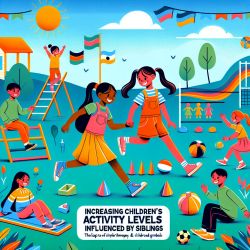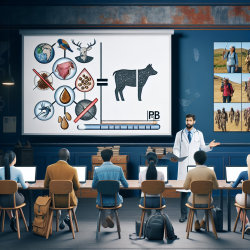Introduction
As practitioners in the field of special education and therapy, we are always on the lookout for effective strategies to enhance the well-being of children. A recent meta-analysis and systematic review titled Sibling Influence on Children’s Objectively Measured Physical Activity provides intriguing insights into how siblings can impact children's physical activity levels. This blog will explore the findings of this research and discuss how practitioners can leverage these insights to improve children's physical activity, potentially reducing obesity rates and enhancing overall health.
The Research Findings
The study, published in BMJ Open Sport & Exercise Medicine, synthesized literature to describe the influence of siblings on children's physical activity and sedentary behavior. It found that children with siblings tend to have higher levels of moderate-to-vigorous physical activity (MVPA) compared to only children. This difference is attributed to several factors, including peer modeling, active transport, and sports participation. The presence of siblings may also provide more opportunities for play and serve as additional caregivers.
Interestingly, the study suggests a dose-response relationship, where more siblings equate to higher levels of MVPA. However, the influence of siblings on sedentary behavior and light physical activity was mixed.
Practical Applications for Practitioners
These findings highlight the importance of considering family dynamics when promoting physical activity among children. Here are some ways practitioners can apply these insights:
- Family-Centric Approaches: Encourage family-based interventions that include siblings in physical activities. This can foster a supportive environment for active lifestyles.
- Peer Support Programs: Develop programs that simulate sibling-like interactions for only children, such as buddy systems or peer mentoring, to encourage physical activity.
- Parental Involvement: Educate parents on the benefits of involving siblings in physical activities and how they can facilitate these interactions.
- School-Based Initiatives: Implement school programs that encourage group activities, allowing children to experience the benefits of peer modeling and support.
Encouraging Further Research
While the study provides valuable insights, there are still gaps in understanding the full extent of sibling influence on children's physical activity. Practitioners are encouraged to explore further research in this area, considering factors such as age differences between siblings, cultural influences, and the role of technology in sibling interactions.
Conclusion
Incorporating the findings from this research into practice can help create more effective strategies for promoting physical activity among children. By understanding and leveraging the sibling dynamic, practitioners can play a crucial role in combating childhood obesity and fostering healthier lifestyles.
To read the original research paper, please follow this link: Sibling influence on children’s objectively measured physical activity: a meta-analysis and systematic review.










